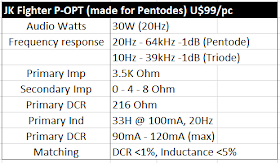Hello everyone!
It has been a while since we've posted! COVID-19 lands us in a really bad condition. Crippled operation. Stunted supply chain. Work from home. Movement restrictions. Anything that you can think of, can happen. Anyhow, life goes on!
Today, we want to share a lesson learnt from a customer of ours to you about transformer repairs. Hope that you do not land in the same situation when you want to repair your transformers, be it transformers for tube amp or transformers for solid state amp.
Customer has a faulty preamp output transformer. He heard of us, and approached us for a quotation. Our price seemed too high for him and he turned down our service to repair his preamp output transformer.
After a month or so, I can't really remember, he came back, confirming that he would want us to repair the preamp output transformer for him, and he will be sending a pair, including the OK output transformer.
We told him - we only need 1 piece, the damaged one. We can and will reverse engineer it if it is not too badly burnt, and rebuild it according to the original design/methods.
He said, he insisted that he needed to send us both the OK and NOK units. I asked, why? He sent the damaged transformer to another person for repair and it came back still damage - producing distorted sound. Now he needs to send it to us for another round of repair. And since the damaged unit had been tempered and may no longer follow the original design, we have to have the OK unit as a reference to rebuild the damaged preamp output transformer
Ah ha!!!
Now do you see the problem? Now we have to dismantle the OK preamp output transformer in order to know the design and rebuild TWO preamp output transformers now. Repair charge is DOUBLED now since we have to work on two units unfortunately.
Moral of the story - pay for quality, do it right the 1st time. In the long run, it may save you more money - for not resending it for another round of repair, for not paying for 2-3rd time of repair, for longevity of the transformer, for getting back the original sound, for peace of mind!
Only send to reputable repair center for your beloved transformers - J&K Audio Design, your faithful repair guy next door. We may charge higher for the repair because we really, really reverse engineer your transformers, and rebuild them based on the original design, use good quality wires, and original materials when available. In addition, most importantly, you get peace of mind that it is in safe hands and you will get it back to be as close as original.
We've repaired tonnes of super high end transformers that cost as much as a car. We've repaired transformers from 1940's to 2000's. We know almost all the designs. We know what we are done.
Thank you and that's all for this time! Stay tuned folks!
Take care and stay safe!
J&K Audio Design
28/11/2020












